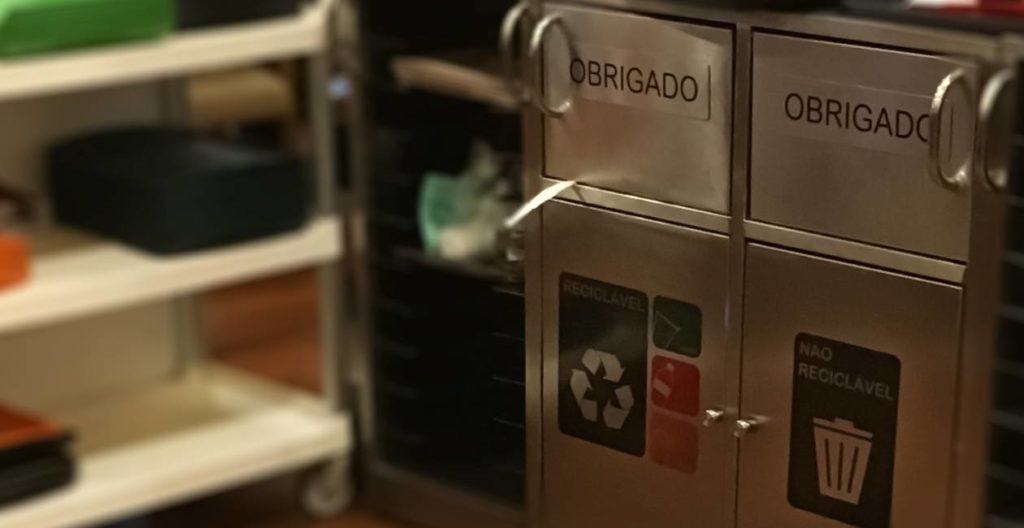Advertisements
The concept of greenwashing is increasingly present in business practices around the world. Greenwashing occurs when a company pretends to adopt environmentally friendly practices, but in reality invests more in advertising to promote a “green” image than in actions that actually minimize environmental impact.
This “greenwashing” is dangerous because it misleads consumers and undermines genuine sustainability efforts. In this context, the role of the “garbage lady” becomes crucial, warning about deceptive practices that harm the environment and consumer confidence.

What is Greenwashing?
Greenwashing, or “greenwashing,” is a marketing strategy in which companies make it appear that their products or practices are environmentally friendly, but in practice do little or nothing to reduce their environmental impact. These companies often invest heavily in advertising campaigns that promote a sustainable image, while behind the scenes they continue to adopt practices that harm the environment. A classic example of greenwashing can be seen in industries such as packaging, where products are labeled as “recyclable” or “biodegradable” without any real consideration of the processes involved.
Greenwashing practices have a negative impact not only on the environment, but also on the public perception of sustainable initiatives. When consumers discover that they have been deceived, they lose trust not only in the company involved, but also in others that genuinely strive to minimize their environmental impact. It is therefore essential that consumers are informed and critical of sustainability claims made by companies.
The Environmental Impact of Deceptive Practices
The environmental impact of greenwashing is significant. When companies promote deceptive practices, they not only fail to contribute to the preservation of the environment, but can also make existing problems worse. For example, a company that claims to use sustainable packaging but in fact, using materials that are not truly recyclable or that require recycling processes that are harmful to the environment is causing more harm than good.
The negative environmental impact extends beyond the materials used. These practices discourage true innovation in sustainability, as companies that engage in greenwashing reap marketing benefits without putting in any real effort. This creates a vicious cycle where the appearance of sustainability trumps the substance, and the environment suffers the consequences.
The Importance of Sustainable Packaging
To the sustainable packaging play a crucial role in minimizing the environmental impact of human activities. Unlike greenwashing, which focuses on appearance, sustainable packaging is designed with the aim of reducing resource use, promoting recycling, and minimizing waste generation. Examples include packaging made from recycled materials, biodegradable materials, or materials that can be reused multiple times.
However, for packaging to be truly sustainable, it is important to consider the entire product life cycle. This includes everything from the extraction of raw materials to final disposal. Adopting sustainable packaging can significantly reduce the environmental impact, but only if it is done in a genuine way and with a real commitment to sustainability.
The Role of the “Trash Aunt” in Environmental Awareness
The figure of the “garbage lady” mentioned in the original text is emblematic in the fight against greenwashing. This person, who deals with the separation and disposal of waste on a daily basis, is often the first to notice the disconnect between what is advertised and the reality of recycling practices. The “garbage lady” represents all those who, in a humble and often invisible way, ensure that correct environmental practices are followed.
It also plays a crucial role in raising environmental awareness, alerting consumers and companies about the reality of waste disposal. In many cases, as in the original text, the truth behind sustainability promises is only discovered through these interactions. It is essential that companies take the role of these people seriously and that their concerns are heard and addressed.
Combating Greenwashing and Promoting Sustainable Practices
Combating greenwashing is essential to ensuring that sustainability efforts are authentic and effective. Companies need to be transparent about their practices and truly commit to reducing greenwashing. environmental impact. On the other hand, consumers must remain critical and informed, questioning sustainability claims and supporting those companies that demonstrate a genuine commitment to the environment.
Furthermore, it is crucial to value the work of those who are on the front lines of recycling and waste management, such as the “garbage lady”. These are the people who ensure that good intentions are not just empty promises, but that they translate into concrete actions that truly benefit the planet. The adoption of sustainable packaging is an important step, but it needs to be part of a larger, more genuine effort to minimize the environmental impact and promote a greener future for all.
Check out other interesting facts about recycling clicking here.
Learn how to make art by recycling, Click here.



